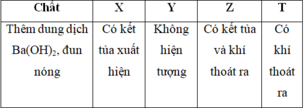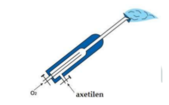Read the following passage, and mark the letter (A, B, c or D) on your answer sheet to indicate the correct answer to each of the following questions.
Until recently, hunting for treasure from shipwrecks was mostly fantasy; with recent technological advances, however, the search for sunken treasure has become more popular as a legitimate endeavor. This has caused a debate between those wanting to salvage the wrecks and those wanting to preserve them.
Treasure hunters are spurred on by though of finding caches of gold coins or other valuable objects on a sunken ship. One team of salvager, for instance, searched the wreck of the RMS Republic, which sank outside the Boston harbor in 1900. The ! search party, using side-scan sohar, a device that projects sound waves across the ocean bottom and produces a profile of the sea floor, located the wreck in just two and a half days. Before the use of this new technology, such searches could take months or years. The team of 45 divers searched the wreck for two months, finding silver tea services, crystal dinnerware, and thousands of bottles of wine, but they did not find the live and a half tons of American Gold Eagle coins they were searching for.
Preservationists focus on the historic value of a ship. They say that even if a shipwreck ‘s ừeasure does not have a high monetary value, it can be an invaluable source of historic artifacts that are preserved in nearly mint condition. But once a salvage team has scoured a site, much of the archaeological value is lost. Maritime archaeogists who are preservationists worry that the success of salvagers will attract more treasure-hunting expeditions and thus threaten remaining undiscovered wrecks. Presevationists are lobbying their state lawmakers to legally restrict underwater searches and unregulated salvages. To counter their efforts, treasure hunters argue that without the lure of gold and million-dolar treasures, the wrecks and their historical artifacts would never be recovered at all.
Read the following passage, and mark the letter (A, B, c or D) on your answer sheet to indicate the correct answer to each of the following questions.
Until recently, hunting for treasure from shipwrecks was mostly fantasy; with recent technological advances, however, the search for sunken treasure has become more popular as a legitimate endeavor. This has caused a debate between those wanting to salvage the wrecks and those wanting to preserve them.
Treasure hunters are spurred on by though of finding caches of gold coins or other valuable objects on a sunken ship. One team of salvager, for instance, searched the wreck of the RMS Republic, which sank outside the Boston harbor in 1900. The ! search party, using side-scan sohar, a device that projects sound waves across the ocean bottom and produces a profile of the sea floor, located the wreck in just two and a half days. Before the use of this new technology, such searches could take months or years. The team of 45 divers searched the wreck for two months, finding silver tea services, crystal dinnerware, and thousands of bottles of wine, but they did not find the live and a half tons of American Gold Eagle coins they were searching for.
Preservationists focus on the historic value of a ship. They say that even if a shipwreck ‘s ừeasure does not have a high monetary value, it can be an invaluable source of historic artifacts that are preserved in nearly mint condition. But once a salvage team has scoured a site, much of the archaeological value is lost. Maritime archaeogists who are preservationists worry that the success of salvagers will attract more treasure-hunting expeditions and thus threaten remaining undiscovered wrecks. Presevationists are lobbying their state lawmakers to legally restrict underwater searches and unregulated salvages. To counter their efforts, treasure hunters argue that without the lure of gold and million-dolar treasures, the wrecks and their historical artifacts would never be recovered at all.
Question: All of the following were found on ther RMS Republic EXCEPT_____
A. wine bottles
B. silver tea services
C. American Gold Eagle coins
D. crystal dinnerwave




